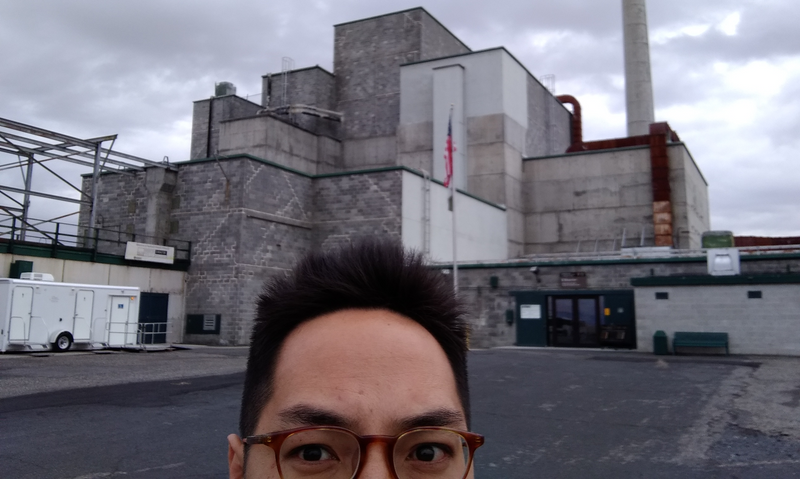
Kota at Mitchell Butte in Malheur County, Oregon, the site of balloon bomb landing on March 29, 1945
“Where is Kota Takeuchi?” This was not an unusual question during Mr. Takeuchi’s 2017 ACC Fellowship. After three months in New York, visual artist Kota Takeuchi had spent the next three zig-zagging across the West Coast, researching the remains of World War II and nuclear industrial sites. Mr. Takeuchi works across various media—from painting and sculpture to film and installation—exploring social memory in historical monuments and modern industrial legacies. Based in Fukushima, Mr. Takeuchi is a member of the Don’t Follow the Wind project, a collective of artists creating work inside the nuclear disaster exclusion area.
In the United States, Mr. Takeuchi’s research did follow the wind, tracing the path of Japanese balloon bomb—or fu-go—landing sites. These bombs, held aloft by hydrogen balloons, were designed to float via jet stream across the Pacific Ocean to the American West. Of the 9,000 or so fu-go released between 1944-1945, only a fraction reached their mark, with approximately 300 documented as sighted, heard, or found.

Left: balloon bomb in Pacific Ocean (March 2, 1945); right: Kota estimates balloon bomb site at the Yakama Nation Main Agency Office
Kota Takeuchi’s Google Map of the U.S. is speckled with hundreds of pinpoints, marking fu-go landing sites gleaned from his research at the National Archives in Seattle and Washington, D.C. and meetings with historians like Ross Coen, author of Fu-go: The Curious History of Japan’s Balloon Bomb Attack on America.
At many of these sites, Kota used a drone to film an estimated trajectory of the balloon bombs’ descent. As time erodes the physical evidence of fu-go sites, Mr. Takeuchi’s project visualizes an increasingly vanishing history.

Left: map of balloon bomb site near Thermopolis, Wyoming; Right: same incident near Thermopolis, Wyoming
This project took him cross-country—across California, Oregon, Washington, Idaho, Utah, Michigan, Montana, and Wyoming—on a road trip many of us have only dreamed of.
For those dreamers out there, be prepared and be flexible. If your journey is anything like Kota Takeuchi’s, you might not always reach your destination. You might drive past that balloon bomb site located vaguely between Blair Valley and Little Blair Valley. You might not be able to conduct on-site research in that nuclear facility. The snow might strand your rental car before you reach the Mitchell Monument, but the kind residents of Klamath Falls might take you in for the night. And you just might find that the former post office in Atomic City, Idaho functions as a bar.
Really, you never know where the winds may take you.
Below: Kota in front of the B Reactor at the Hanford Site, near Richland, Washington

 ACC New York
ACC New York